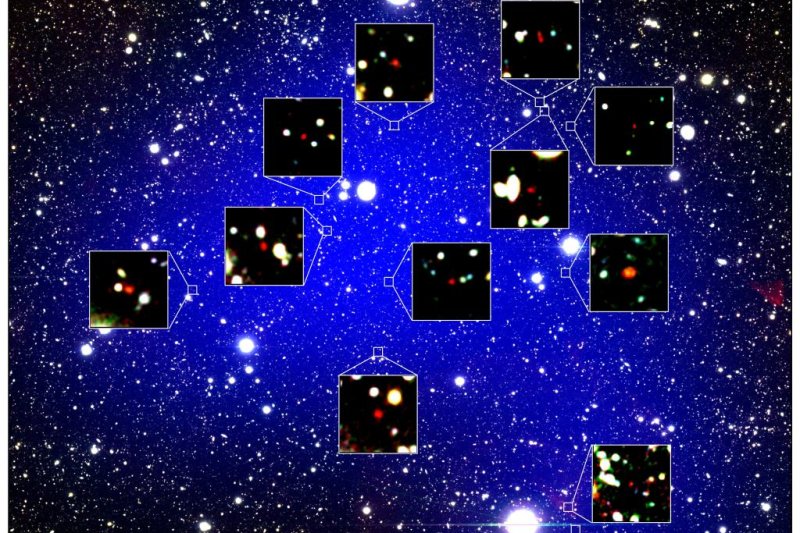The protocluster z66OD, featuring 12 galaxies, is the earliest of its kind, found 13 billion light-years from Earth. Photo by NAOJ/Harikane et al.
Sept. 27 (UPI) -- With the help of several powerful telescopes, an international team of astronomers has identified the earliest known protocluster.
The protocluster, a constellation of 12 galaxies linked by gravity, formed some 13 billion years ago, when the universe was just 800 million years old.
Scientists have described their discovery in a new paper, set to be published in the Astrophysical Journal on September 30.
In the present universe, galactic clusters can grow to contain thousands of galaxies. Smaller galaxy clusters can organize to form superclusters, the largest structures in the cosmos. Models suggest there are 10 million superclusters in the observable universe.
The protocluster candidate, z66OD, contains a protogalaxy called Himiko, a giant gas cloud and one of the largest objects in the early universe.
Astronomers regularly probe deep space for signs of protoclusters. Studying these distant objects can help scientists understand how groups of galaxies form, evolve and grow.
Researchers spotted z66OD using the Subaru, Keck, and Gemini telescopes.
"A protocluster is a rare and special system with an extremely high density, and not easy to find," lead researcher Yuichi Harikane, a JSPS fellow at the National Astronomical Observatory of Japan, said in a news release. "To overcome this problem, we used the wide field of view of the Subaru Telescope to map a large area of the sky and look for protoclusters."
Just a decade ago, scientists used Subaru to spot Himiko.
"It is reasonable to find a protocluster near a massive object, such as Himiko," said Masami Ouchi, researcher at the National Astronomical Observatory of Japan and the University of Tokyo. "However, we're surprised to see that Himiko was located not in the center of the protocluster, but on the edge 500 million light-years away from the center."
The latest observations suggest the 12 members of the protocluster are in the act of expansion. Scientists measured high rates of star formation within each galactic member. The accelerated star formation in each galaxy is being fueled by dense supplies of gas. Surprisingly, the protocluster does not appear to host a massive dusty galaxy, thought to be a feature of all early galaxy clusters.
"Although we haven't found such a galaxy in z66OD yet, future observations, for example with the Atacama Large Millimeter/submillimeter Array, ALMA, in Chile, should reveal more of the structure of z66OD," Seiji Fujimoto, an astronomer at Waseda University, Japan, said in a statement.















